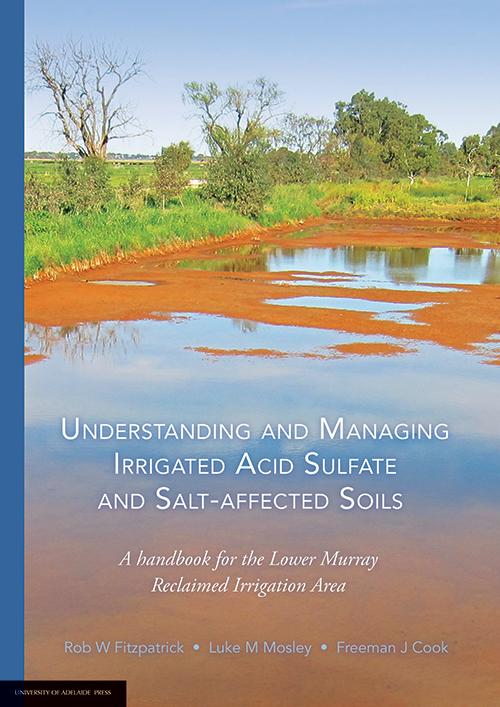Understanding and Managing Irrigated Acid Sulfate and Salt-affected Soils

A handbook for the Lower Murray Reclaimed Irrigation Area
by Rob W. Fitzpatrick, Luke M. Mosley and Freeman J. Cook
FREE | 2017 | Ebook (PDF) | 978-1-925261-64-6 | 139 pp
DOI: https://doi.org/10.1017/10.20851/murray-soils
Extreme drought conditions from 2007 to 2010 (the ‘Millennium’ Drought), resulted in the lowest River Murray levels (1.75 m decline from average) in over 90 years of records below Lock 1 in South Australia. This placed increased pressures on existing water resource, land use and soil management practices in the Lower Murray Reclaimed Irrigation Area (LMRIA), making sustainable soil management much more difficult. The crisis of declining soil/water quality and productivity in the LMRIA is also the result of dysfunctional land and water management systems in many irrigation areas, which was exacerbated by the drought and restructuring of the region in the 2000s. Over the past decade or so there has been a marked ‘demand pull’ for soil and water quality information in the LMRIA at a high level of policy- and decision-making in South Australian and Commonwealth Government agencies, especially for acid sulfate soils (ASS) and salt-affected soils.
The services provided by soils to improve water quality and the resilience and profitability of farming systems are irreplaceable and invaluable. Importantly, if agriculture technologies are directed at improving soil and water quality, a more holistic perspective must be adopted to ensure that agricultural intervention will be both sustainable for whole landscapes and adopted by farmers and communities. Hence now, more than ever before, we need to manage soil and water resources wisely.
This handbook is designed to be used by farmers, land managers, agencies and service providers to provide land management options as part of farm property management plans which incorporate options that help prevent the spread of acid sulfate and salt-affected soils. These options are targeted to specific parts of the landscape (for example, irrigated floodplain land, drains, levee banks) and should be incorporated into farm management plans.
